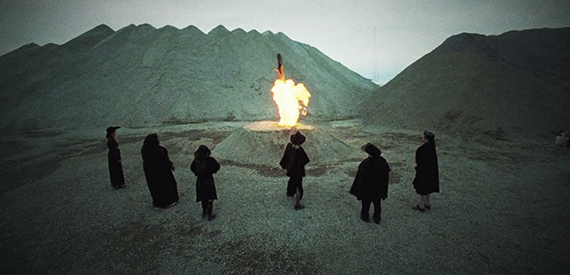Witch is a word that may conjure thoughts of broomsticks, cauldrons, pointy hats and perhaps even green skin and a crooked nose. It is likely that with all the imagery that comes to mind at the mention of the word witch, ‘medical cannabis’ is not among them. However, perhaps it should be.
Between the 15th and 17th century, over a period of 300 years in Europe, was what many historians have come to call the “women’s holocaust” – and with good reason. It is difficult to acquire exact numbers for the death toll during this period, but estimates range from the hundred thousands, to the millions. What we do know, is that 85% of those murdered for the crime of witchcraft, were women.
Many of these women were practitioners of old pagan religions, and their traditions entailed great, sacred knowledge that had been passed down through many generations. This was a way of life that dated back thousands of years.
These were the “wise women” – the counselors, visionaries and healers. For many, this knowledge included ancient healing practices which relied heavily on herbology. This is where we begin to see the intersection of cannabis in what was then seen as witchcraft.
Most ancient pagan religions revolved around a worship of nature, the earth, and the natural cycles of our world. It is no wonder with this reverence towards nature that herbal medicines would have been of great use to these women healers, and would have been held in high regard.
Many speculate that cannabis was a favored herb among early pagan healers. This is not a preposterous leap to make, as many of the herbal remedies we use today have been utilized for centuries, and herbalism as well as cannabis use is fairly well documented dating back centuries.
The documentary, The Burning Times, which covers the persecution of witches in Europe in great depth, recalled how women healers were labeled heretics and banned from practicing medicine, “For thousands of years, women had been the physicians of the people. They understood the principles of anatomy and nutrition; they birthed babies, and held the dying in their arms. Priests fumed, as the village wise woman received the honor and gratitude the church claimed for God alone.
New laws proclaimed that any woman who did cure–without having studied–was a witch and must die. Since most women were barred from university, the rise of the male medical profession was guaranteed. Women continued to practice, but now they did so in fear of their lives. It was the testimony of male doctors that sent many to their deaths.”
The wise women were branded as witches, heretics and satanists. As these ‘witches’ were put to death, so with them went sacred, ancient knowledge. During a time when illiteracy was rampant, the traditions lived solely in the minds of the women who had learned them, and were passed down from generation to generation. There exist no written records of their practices; no instructional texts unlocking the secrets of their wisdom.
As such, we may never fully regain the knowledge lost along with the human lives who guarded it. Just as one cannot say with certainty how many were lost to the burning times, it is impossible to be sure of the traditions that were destroyed. Was the progress and prevalence of medicinal cannabis another casualty of the burning times? We may never know for sure. However, we do know that a great deal of herbal medicinal knowledge perished along with the women who we call witches.











